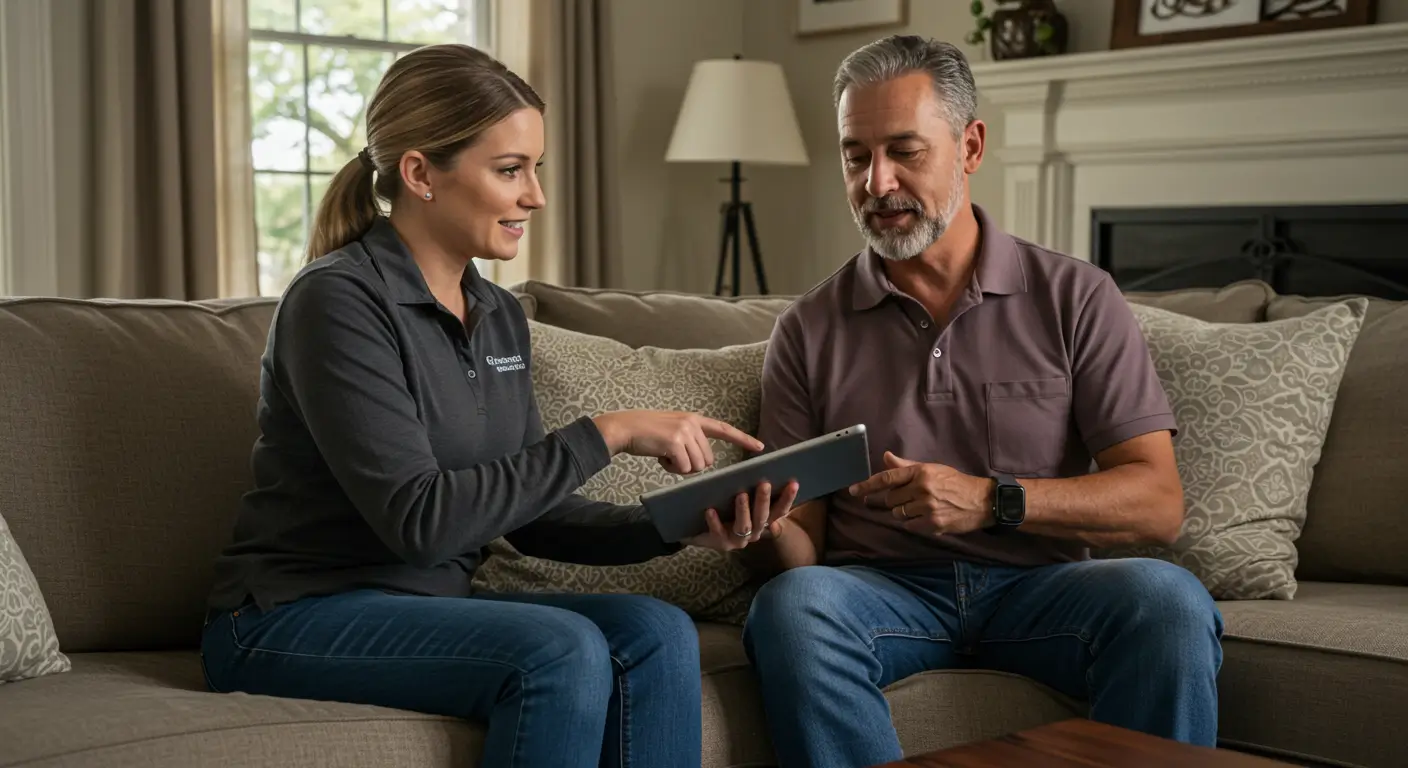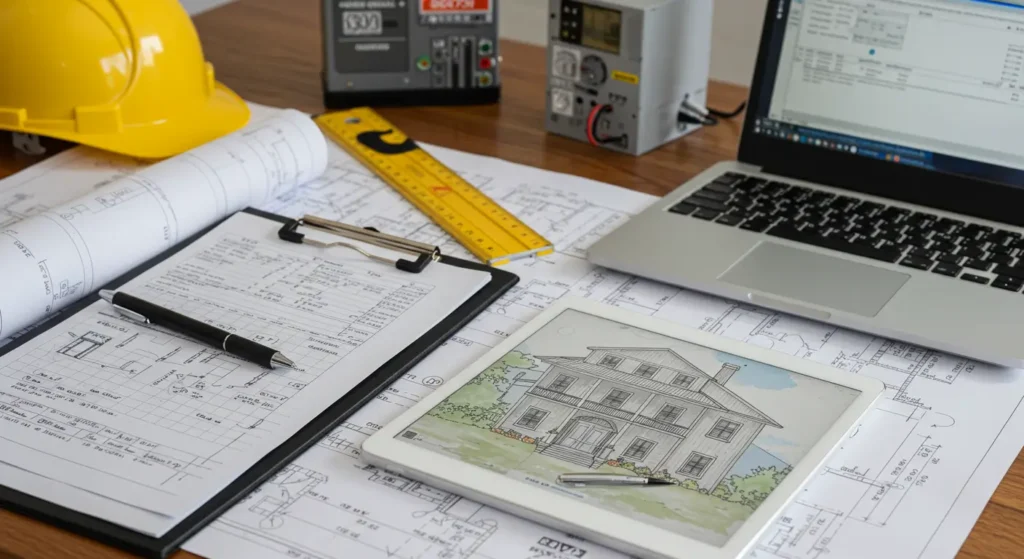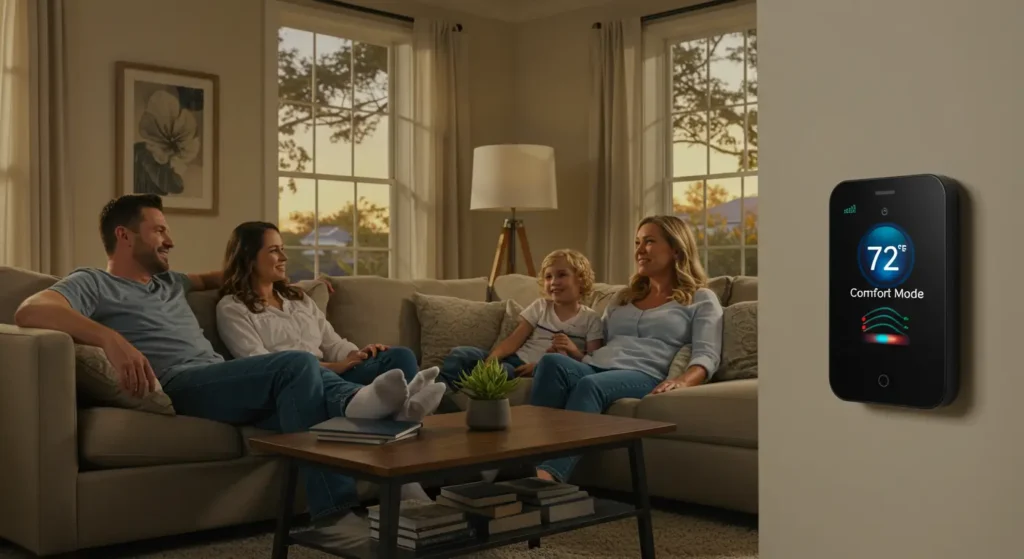Choosing the right HVAC system for your New Orleans home isn’t just about cooling—it’s about surviving our unique climate challenges. From crushing humidity to hurricane season, your system needs to handle what Mother Nature throws at us while keeping energy bills reasonable.
Table of Contents
When your old AC finally gives up during another brutal New Orleans summer, you’re facing a decision that’ll affect your family’s comfort and your wallet for the next 15-20 years. Choosing an HVAC system isn’t like picking out a new refrigerator—it’s a major investment that needs to work perfectly in our demanding climate.
We’ve been helping New Orleans homeowners select and install the right systems for over a decade, and we’ve learned that what works great in other parts of the country can struggle miserably here. Our humidity doesn’t just make you uncomfortable—it makes your HVAC system work harder than almost anywhere else in America.
The good news? When you understand what makes our climate unique and choose the right system accordingly, you’ll stay comfortable while keeping energy bills reasonable. The not-so-good news? Making the wrong choice can mean years of high utility bills, humidity problems, and premature system failures.
Whether you’re replacing a failed system or planning an upgrade, our experienced team at Hagerman Services understands exactly what works in New Orleans homes—from historic Creole cottages to modern suburban builds.
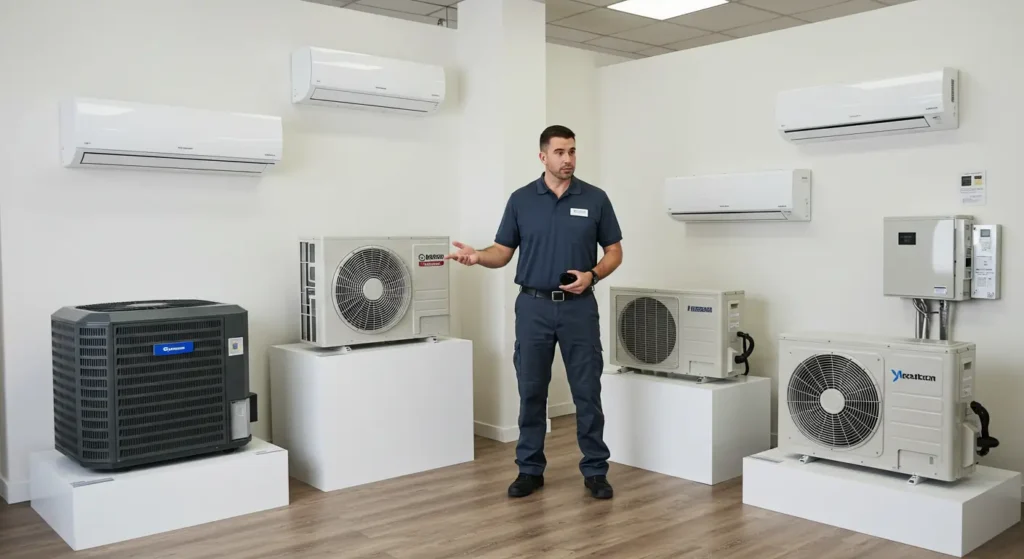
Why New Orleans HVAC Systems Face Unique Challenges
Before diving into specific system types, let’s talk about what makes choosing an HVAC system for New Orleans different from anywhere else. Understanding these challenges helps you make a smarter selection.
Humidity is the real enemy. While other parts of the country deal with dry heat, our 80-90% humidity levels mean your system isn’t just cooling air—it’s pulling gallons of moisture out of your home every day. An HVAC system that can’t handle humidity leaves you feeling clammy even when the temperature is right.
Extended cooling seasons demand efficiency. Your system runs hard from March through November, and sometimes beyond. That’s 8-9 months of heavy use compared to 4-5 months in most climates. Energy efficiency isn’t just nice to have—it’s essential for keeping utility bills manageable.
Hurricane season impacts matter. Your new system needs to handle power outages, potential flooding, and post-storm restart conditions. Proper HVAC system selection includes considerations for storm resilience that don’t apply in most other markets.
Historic homes present special challenges. Many New Orleans homes weren’t designed for central air. High ceilings, minimal insulation, and architectural features can make standard systems struggle. Your HVAC system choice might need to work around these constraints rather than requiring major home modifications.
Understanding these factors is crucial when planning your HVAC installation project. What matters most isn’t just the equipment you choose, but how it’s sized, configured, and installed for our specific conditions.
Central Air Conditioning Systems: Traditional Reliability
Traditional split systems remain the most common choice for New Orleans homes, and for good reason. When properly selected and installed, these systems provide reliable cooling with proven technology that local technicians understand well.
Single-stage systems are the most basic option, running at full capacity whenever they’re on. While less expensive initially, they can struggle with humidity control in our climate because they cool quickly and shut off before removing enough moisture from the air.
Two-stage systems offer better humidity control by running at lower capacity most of the time, only ramping up to full power when needed. This longer run time at lower speeds removes more moisture while using less energy than constantly cycling a single-stage unit.
Variable-speed systems represent the premium option, adjusting output continuously to match your home’s needs. These systems excel at humidity control and energy efficiency, making them particularly well-suited for New Orleans conditions.
→ SEER ratings matter more here than most places
→ Proper ductwork sizing is critical for humidity control
→ Quality installation affects long-term performance significantly
For most New Orleans homes, we recommend at least a 16 SEER two-stage system. The energy savings over our extended cooling season typically justify the higher initial cost within 3-4 years, and the improved humidity control makes a noticeable difference in comfort.
Heat Pump Systems: Year-Round Efficiency
Heat pumps are becoming increasingly popular in New Orleans because they provide both heating and cooling efficiently. Since we don’t experience extreme cold very often, heat pumps can handle our mild winter heating needs while excelling at summer cooling.
How heat pumps work in our climate: During summer, they operate exactly like traditional air conditioners. During those occasional cold snaps, they extract heat from outside air and move it inside. When temperatures drop below their effective range (usually around 25-30 degrees), backup electric heat kicks in.
Energy efficiency advantages are significant. Heat pumps can provide 2-3 times more heating energy than they consume in electricity, compared to electric furnaces that convert electricity to heat at a 1:1 ratio. For New Orleans’ mild winters, this efficiency translates to real savings.
Humidity control capabilities match or exceed traditional air conditioning systems, with the same options for single-stage, two-stage, or variable-speed operation.
Cold weather limitations are minimal here. Modern heat pumps work effectively down to about 25 degrees, and New Orleans rarely sees temperatures that low. When we do, backup heat ensures you stay comfortable.
The main consideration with heat pumps is finding a contractor experienced with proper installation and service. Our team has extensive experience with heat pump systems and can help you determine if this technology makes sense for your home.
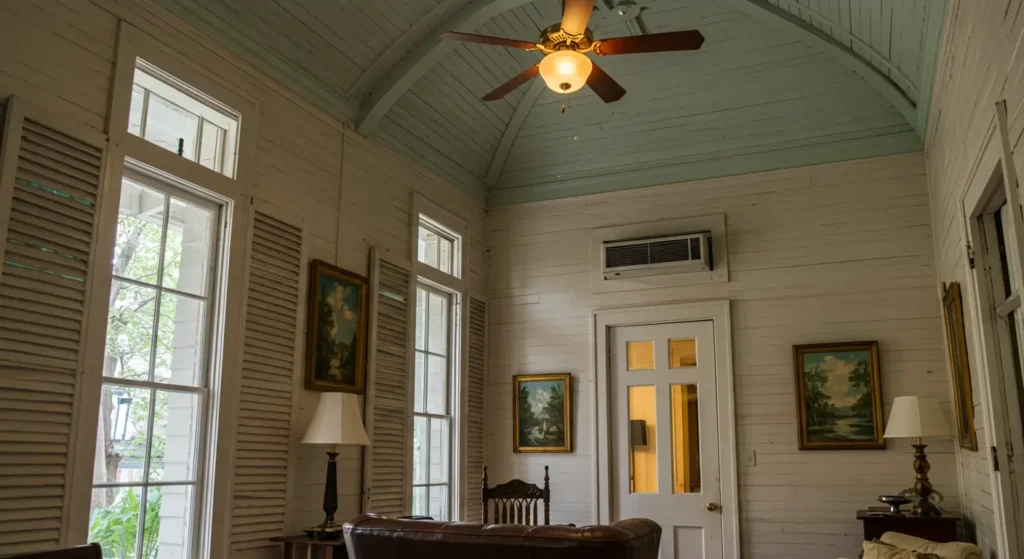
Ductless Mini-Split Systems: Perfect for Unique Situations
Ductless systems solve problems that traditional HVAC system installations can’t address effectively. They’re particularly valuable in New Orleans because of our historic homes and unique architectural challenges.
Historic home advantages:
- No central ductwork installation required
- Minimal impact on original architecture
- Zone control for different areas
- High efficiency without structural modifications
Room addition solutions make ductless systems popular for expanding existing homes. Rather than oversizing your central system or running ductwork to new areas, ductless units provide targeted cooling exactly where needed.
Energy savings potential can be significant because you cool only occupied spaces. In larger homes with rooms that aren’t used regularly, this selective cooling can reduce energy costs substantially.
Quiet operation makes these systems ideal for bedrooms and living areas where noise from traditional systems might be disruptive. The indoor units operate much more quietly than conventional air handlers.
Installation flexibility allows placement in locations where ductwork would be impossible or prohibitively expensive. This makes ductless systems particularly attractive for challenging installations.
The main considerations are aesthetic (indoor units are visible) and cost (multiple zones can become expensive). However, for the right applications, ductless systems provide comfort and efficiency that traditional systems can’t match.
What Doesn’t Work Well in New Orleans
Learning from others’ mistakes can save you years of frustration and thousands in energy costs. Here are HVAC system choices that consistently underperform in our climate.
Undersized systems are a disaster. Some contractors try to save money by installing systems too small for our climate demands. An undersized HVAC system runs constantly, fails to control humidity, and wears out prematurely while driving up energy bills.
Oversized systems cause different problems. They cool quickly but shut off before removing humidity, leaving you with cold, clammy air. They also cycle on and off frequently, which wastes energy and stresses components.
Single-stage systems in larger homes often struggle with humidity control. The rapid cooling followed by long off periods doesn’t provide the consistent moisture removal our climate demands.
Cheap, low-efficiency equipment might save money upfront, but costs significantly more over our extended cooling seasons. With 8-9 months of heavy use, efficiency ratings directly impact your annual energy costs.
DIY or bargain installations frequently result in systems that never work properly. Proper installation requires understanding refrigerant charging, airflow requirements, and humidity control—skills that take years to develop properly.
According to the Department of Energy, proper sizing and installation can affect system efficiency by 30% or more, making contractor selection as important as equipment choice.
Sizing Your HVAC System Correctly
Getting the size right is absolutely critical for HVAC system performance in New Orleans. Too small, and it can’t keep up. The system is too large, and humidity control suffers while energy costs increase.
Manual J load calculations are the industry standard for proper sizing. This detailed analysis considers:
- Square footage and ceiling height
- Insulation levels in walls, attics, and floors
- Window types, sizes, and orientations
- Local climate data specific to New Orleans
- Internal heat gains from appliances and occupants
Rule-of-thumb sizing is dangerous. The old “one ton per 500 square feet” doesn’t account for our humidity, solar gain, or building construction differences. Proper calculations often reveal that homes need different capacities than simple rules suggest.
Humidity control requirements affect sizing decisions. In dry climates, you might choose a smaller unit that runs longer. In New Orleans, you need enough capacity to handle peak loads while still providing adequate dehumidification during moderate weather.
Ductwork capacity must match equipment sizing. Undersized ducts restrict airflow, reducing efficiency and humidity control. Oversized ducts can reduce air velocity, affecting moisture removal and system performance.
When you work with Hagerman Services for installation, we perform complete load calculations rather than estimating. This ensures your new HVAC system is sized correctly for both comfort and efficiency in our challenging climate.
Energy Efficiency Considerations for New Orleans
With our extended cooling seasons, energy efficiency directly impacts your annual operating costs. Understanding efficiency ratings helps you make informed decisions about long-term value.
SEER ratings measure cooling efficiency. Higher numbers mean lower operating costs, but they also mean higher equipment costs. For New Orleans, the sweet spot is typically 16-20 SEER, depending on your specific situation and budget.
Payback calculations matter. A 16 SEER system might cost $1,000 more than a 14 SEER unit, but save $200 annually in energy costs. Over our extended cooling season, that’s a 5-year payback with 10+ years of additional savings.
Variable-speed technology provides efficiency beyond SEER ratings suggest. These systems adjust output to match demand, running longer at lower speeds. This provides better humidity control while using less energy than constantly cycling standard units.
Proper installation affects efficiency significantly. Even the most efficient HVAC system won’t perform well if installation is poor. Refrigerant charging, airflow setup, and ductwork connections all impact real-world efficiency.
Maintenance preserves efficiency. A well-maintained system operates at rated efficiency longer. Neglected systems lose efficiency over time, potentially costing hundreds annually in extra energy costs. Our maintenance services help preserve your investment in high-efficiency equipment.
Energy costs in Louisiana average about $0.12 per kWh, making efficiency improvements particularly valuable over our long cooling seasons.
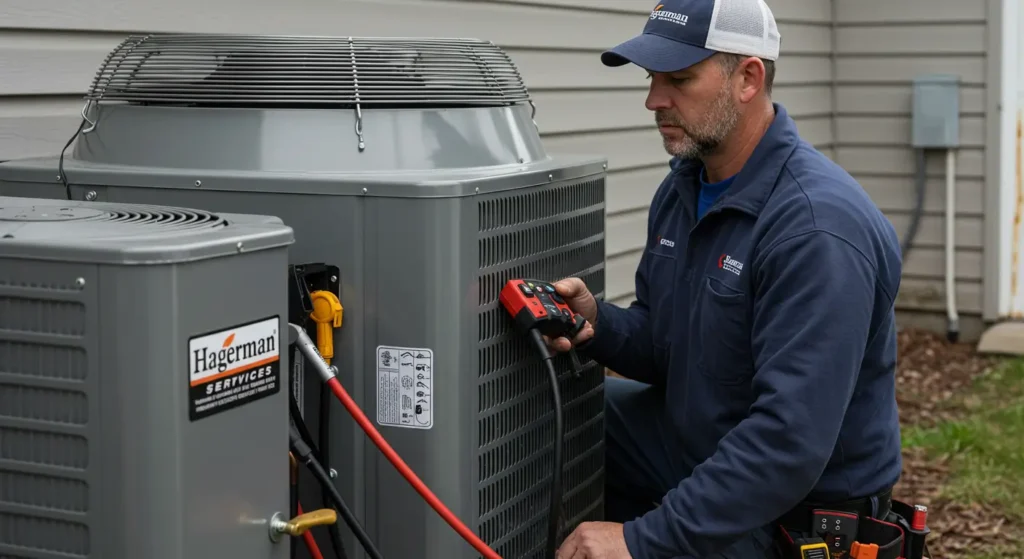
Professional Installation: Why It Matters
The best HVAC system in the world won’t work properly if installation is poor. In New Orleans’ demanding climate, quality installation isn’t just recommended—it’s essential for system performance and longevity.
Refrigerant charging must be precise. Too little refrigerant reduces capacity and efficiency. Too much can damage the compressor. Proper charging requires experience, proper tools, and understanding of system operation under local conditions.
Airflow setup affects everything from comfort to equipment life. Proper installation ensures adequate airflow for cooling while optimizing humidity removal. This requires understanding ductwork design, fan speeds, and refrigerant system operation.
Electrical connections must handle New Orleans’ weather extremes. Poor connections can cause system failures, especially during storms or high-demand periods. Professional installation includes proper electrical work and protection.
Drainage systems are critical in our humid climate. Your HVAC system removes gallons of water daily. Proper drainage prevents water damage and maintains indoor air quality.
Storm preparation should be part of installation planning. This includes secure equipment mounting, electrical surge protection, and considerations for post-storm restart procedures.
When you’re ready to move forward with a new HVAC system, call Hagerman Services at (504) 314-1486 for a consultation. We’ll help you select the right system for your home and ensure it’s installed properly for years of reliable performance.
Making Your Final Decision
Choosing the right HVAC system involves balancing upfront costs, operating expenses, and long-term reliability. Here’s how to approach your final decision.
Start with a professional assessment. Every home is different, and what works well for your neighbor might not be ideal for your situation. Professional evaluation considers your home’s specific characteristics and your family’s comfort preferences.
Consider total cost of ownership. The cheapest HVAC system isn’t necessarily the best value. Factor in energy costs over the system’s expected life, maintenance requirements, and reliability records when comparing options.
Plan for our climate realities. Systems that work well in moderate climates may struggle here. Choose equipment and contractors with proven experience in Gulf South conditions.
Don’t compromise on installation quality. The most efficient system won’t perform well if poorly installed. Choose contractors based on experience and reputation, not just price.
Think about future needs. Will your family grow? Are you planning additions or renovations? Consider how these changes might affect your HVAC system requirements.
The right system properly installed will provide 15-20 years of reliable comfort. Taking time to make informed decisions now prevents years of problems and excessive energy costs later.
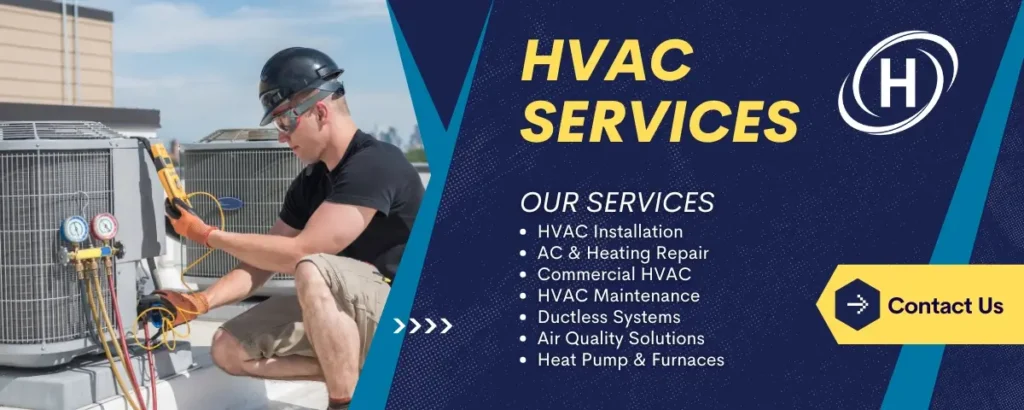
Ready to Choose Your Perfect HVAC System?
Selecting the right HVAC system for your New Orleans home doesn’t have to be overwhelming. With the right information and professional guidance, you can choose a system that keeps your family comfortable while managing energy costs effectively.
At Hagerman Services, we’ve helped hundreds of New Orleans homeowners navigate this decision. We understand our unique climate challenges and know which systems perform best in different situations. Whether you’re dealing with a historic home, planning new construction, or replacing a failed system, we’ll help you make the right choice.
Ready to explore your options? Contact us for a comprehensive consultation. We’ll assess your home, discuss your comfort preferences and budget, and recommend systems that make sense for your specific situation.
Don’t wait until your current system fails during the next heat wave. Call us at (504) 314-1486 to start planning your upgrade today. Your family’s comfort and your wallet will thank you.
Frequently Asked Questions
Q: What’s the best HVAC system for New Orleans humidity?
A: Variable-speed systems or two-stage units work best for New Orleans humidity because they run longer at lower speeds, providing better dehumidification than single-stage systems that cycle on and off frequently.
Q: Should I choose a heat pump or traditional AC in New Orleans?
A: Heat pumps are excellent for New Orleans because they provide efficient cooling and can handle our mild winter heating needs. They’re more energy-efficient than traditional electric heat during cold snaps.
Q: How do I size an HVAC system for my New Orleans home?
A: Proper sizing requires a detailed load calculation considering square footage, insulation, windows, ceiling height, and New Orleans’ specific climate factors. Never rely on rules of thumb—get a professional calculation.
Q: Are ductless mini-splits good for historic New Orleans homes?
A: Yes, ductless systems are ideal for historic homes where installing ductwork would be expensive or impossible. They provide excellent zone control and high efficiency without major structural modifications.
Q: What SEER rating should I choose for New Orleans?
A: 16+ SEER systems make sense in New Orleans because of our 8-9 month cooling season. While initial costs are higher, energy savings over extended use periods typically justify the investment within 3-4 years.
Q: How important is hurricane resilience for HVAC systems?
A: Very important. Your system should handle power outages, flooding risks, and post-storm conditions. Proper installation includes storm resilience considerations that don’t apply in most other markets.
